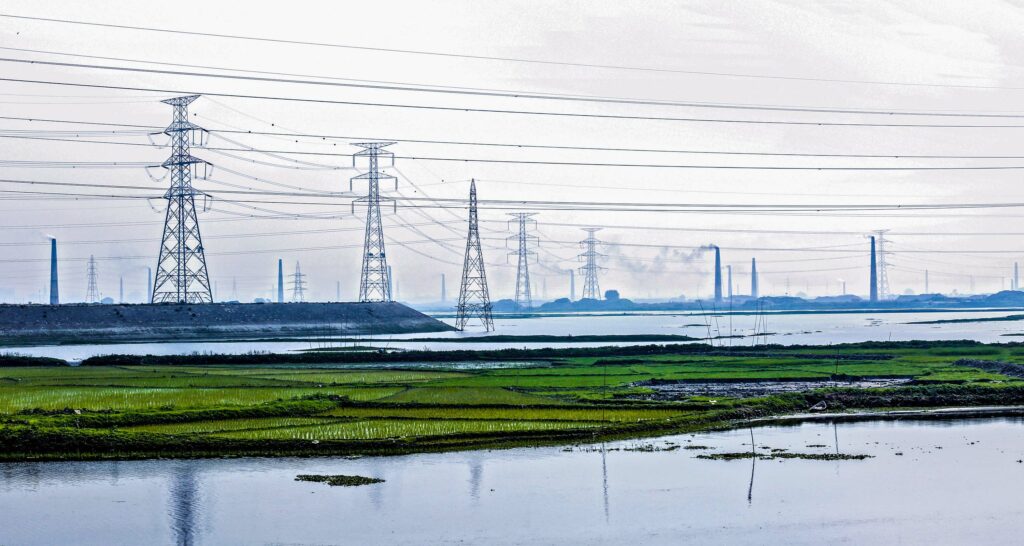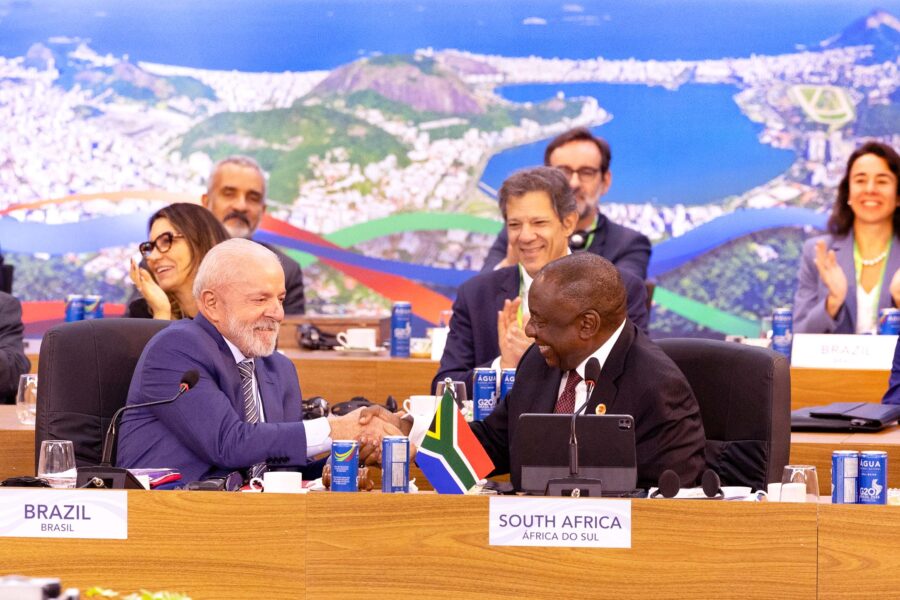Every watt we save brings us closer to net zero
Improvements in energy efficiency are a critical component in our quest to reach net zero by 2050. While rapid technological advances suggest the transformation is possible, we must also direct efforts to overcome the many challenges – from financial to behavioral – that remain
Climate — Global

Achieving net zero by mid-century calls for all high-emitting sectors to bring down emissions intensity across the board. This will include electricity generation, heating, and electrifying hard-to-abate industrial sectors and the transportation sector. Across the spectrum of existing and emerging solutions, renewable energy and energy efficiency have proven the most fundamental and promising. Importantly, by harmonizing these two technologies we can provide great benefits to society, helping to lower energy bills, saving billions in infrastructure investments, and strengthening energy security.
Energy efficiency is recognized as a “no regrets” option, contributing the most cost-effective mitigation actions in the race to net zero. However, complexities associated with business models, technical and financing challenges, as well as behavioral changes mean that energy-efficiency measures have, thus far, failed to reach adequate levels in many parts of the world.
Energy efficiency, in physical terms, can relate to the ratio between the useful output and input of an energy conversion process, through thermal, electrical, chemical, or luminous processes. In behavioral terms, energy efficiency can relate to minimizing the amount of energy used for a given, constant energy service. It also refers to energy conservation, or reducing energy consumption by using less of an energy service. It is a useful measure and indicator for the efficiency of a product, process, or behavior. In broader terms, energy efficiency can be improved throughout the whole energy supply chain in generation, transmission, and distribution, as well as from the demand side.
Technology is ramping up supply-side efficiency
Generation efficiency is important to bringing down unit costs of clean energy generation, and this can be achieved through technological advancement. Examples include more efficient solar cells and panels, wind turbines, development of the most productive sites for renewable energy, and increased grid flexibility for better utilization of renewable energy with more energy storage or smart grids.
Technological research and innovation has helped progress the development of more efficient solar cells, such that they are now surpassing 30% efficiency (10% more efficient than commercial panels used today), by using perovskite-on-silicon “tandem” cells, and other advanced technologies. If successfully scaled up, they could be commercialized within five years, helping to bring down the unit cost of solar electricity and enabling faster deployment of solar technology.
The largest offshore wind turbine now has nearly 20 megawatts capacity. Offshore turbines can take advantage of more stable wind resources over the sea (as opposed to land-based wind), to replace fossil fuel baseload power. Offshore wind technology can also benefit from being located close to large demand centers, which are often in coastal areas. Project scale, turbine size, and performance improvements have been shown to reduce the overall levelized cost of energy (LCOE), now averaging USD 0.13 per kilowatt hour (kWh).
The technology and cost of battery storage has also improved in recent years. It is now often considered as a practical solution to complement the variability of renewable energy sources such as solar and wind, and to increase the flexibility and stability of the grid.
Challenges, however, remain. Multifaceted barriers for large-scale renewable energy developments such as offshore wind and battery storage may include:
- complex technical requirements
- grid connection challenges
- regulatory uncertainty
- investment challenges
- governance issues related to contracting
Another strategy relates to optimizing spatial planning through the co-location of hydro-floating solar, wind and solar storage technologies, or other hybrid technologies, including nuclear and geothermal. This can help improve production and cost efficiencies by sharing sites, grid connection, and high-voltage transmission lines.
Achieving supply-side efficiency will require maximizing the utilization of zero or low-marginal-cost generation assets, and avoiding the curtailment of renewable energy outputs. Energy storage and co-location strategies aim to strengthen system-level optimization to improve the utilization of variable renewable energy assets, and thus the bankability of these projects.
Reducing loss through transmission and distribution (T&D) efficiency
Delivering electrical energy can incur energy losses en route, through heat (the joule effect), magnetic losses, and the dielectric effect (where energy is absorbed into the insulating material), as well as commercial losses. Average grid losses among Organisation for Economic Co-operation and Development (OECD) countries currently sit at around 7%, while in developing nations transmission losses can be as high as 20%. Further, distribution losses can reach up to 50% due to inaccurate or inadequate metering, power theft, and other issues. Pakistan, for example, has seen some of the highest T&D losses in the Asia-Pacific region. Through issues including a weak grid, mismanagement, and weak governance in its power sector, Pakistan can lose up to 35% of the electrical energy it generates.
A Stanford University study indicated that reducing T&D losses by 1% could allow 1.6% to 5.4% of existing fossil-fuel plants around the world to be retired. Currently, there are over 2,000 gigawatts (GW) of coal-fired power plants still operating worldwide. Over 500 GW of these are located in developing nations that bear grid losses higher than the OECD average. This suggests that, on average, every 2% reduction in T&D losses would enable around 50 GW of coal-fired power plants to be retired. That would be equivalent to the capacity of the entire coal fleet in Indonesia or South Africa.
In a weak grid, system efficiency losses from renewable-energy curtailment (reduction of power production) can also be significant. This acts as a deterrent to renewable-energy investment in many developing regions. Better energy connectivity and grid efficiency can allow the transportation of renewable energy from more productive sites to demand centers. For example, a UN ESCAP study on the Electricity Connectivity Roadmap for Asia and the Pacific suggested that a fully developed power grid interconnection in the ASEAN (Association of Southeast Asian Nations) region could help reduce the average electricity cost by USD 0.02/kWh, while increasing the share of renewable energy to 62% of electricity supplied by 2050.
Key challenges for developing a regional grid that connects across countries include:
- multiple countries or stakeholders not acting in everyone’s best interests
- the challenge of securing financing when costs, benefits, and risks cannot be allocated equitably
- political hesitancy in instances where national energy security would be dependent on other countries
Increasing demand-side efficiency
While it is essential for industry, the built environment, and the transportation sector to achieve net zero, demand-side energy efficiency can be delivered in various forms.
Despite hard-to-abate industries such as cement and steel depending on high heat and energy-intensive processes, new technologies or process improvements can be effective. For example, LC3 (limestone calcinated clay cement) requires lower temperatures for clinker (an intermediate output during the production process). This can reduce costs by up to 25% and reduce emissions by 40% compared with ordinary Portland cement (OPC). Another strategy is to utilize local or on-site renewable energy and electrification. If combined with a flexible, demand-side response, further efficiency gains and cost reductions can be achieved.
Other sectors, such as the built environment, present a different set of challenges. However, the adage of “reduce, reuse, and recycle” remains key to better efficiency. In a changing climate, buildings contribute a unique, synergistic role that is central to the survival of many. Energy-efficient buildings enable humans to adapt to a warming climate, while also mitigating climate change. A fabric-first approach prioritizes the energy performance of the thermal shell (external walls, floor, and roof) so that less renewable energy is needed to offset demand from appliances. For cities, this means all new buildings will have lower “upfront” embodied energy that are designed-in from the very beginning. On the other hand, existing buildings can be retrofitted or adapted and repurposed.
A key barrier to improving demand-side energy efficiency is for households and businesses to understand the true costs and benefits of energy-efficiency investments. This is not always immediate: an upfront cost is often involved for energy-efficiency upgrades, and economic gains from such investments accrue over a 10-to-15-year time frame. Attractive business models, often supported by government incentives or subsidies, are therefore critical to incentivize energy-efficiency actions. The economics of these models can be further improved through enabling demand response across all sectors, to reduce peak energy demand. This, in turn, will help avoid the need to invest billions of dollars in T&D grid infrastructure and in additional generation capacity.
Efficiency and renewables go hand in hand
Without doubt, energy efficiency and renewable energy will need to progress in tandem for the world to achieve both Sustainable Development Goal (SDG) 7 (affordable and clean energy) and SDG 13 (climate action). Harmonizing both energy efficiency and renewable energy will not only improve energy security for nations. It will also help address energy affordability and optimize energy-related investments.
We need urgent and effective decision-making and wide-scale behavior change related to energy-efficiency solutions and practices. These can be promoted through regulations, policies, and incentives, such as minimum mandatory standards and energy labels. Financial institutions must also play an important role, not only through improving energy efficiency and renewable energy finance flow, but also developing green taxonomies and environmental, social, and governance (ESG) standards, and innovative financing products. To encourage long-term behavior change toward energy-efficiency practices from households and businesses, we need to address a range of motivations. Additionally, accessibility of information and education will be essential to supporting decision-making processes in adopting energy-efficiency solutions and practices.
Vitally, supplying affordable and clean electricity for all people must be treated as a priority when tackling sustainable development, economic uplift, and poverty alleviation. Through coherent energy planning and national development planning, governments can view the inevitable, low-carbon energy transition as an opportunity to support socio-economic and environmental goals and development objectives. Achieving this equitably and efficiently calls for a holistic approach and a conducive enabling environment. We have every opportunity – but we now have no time to waste.





